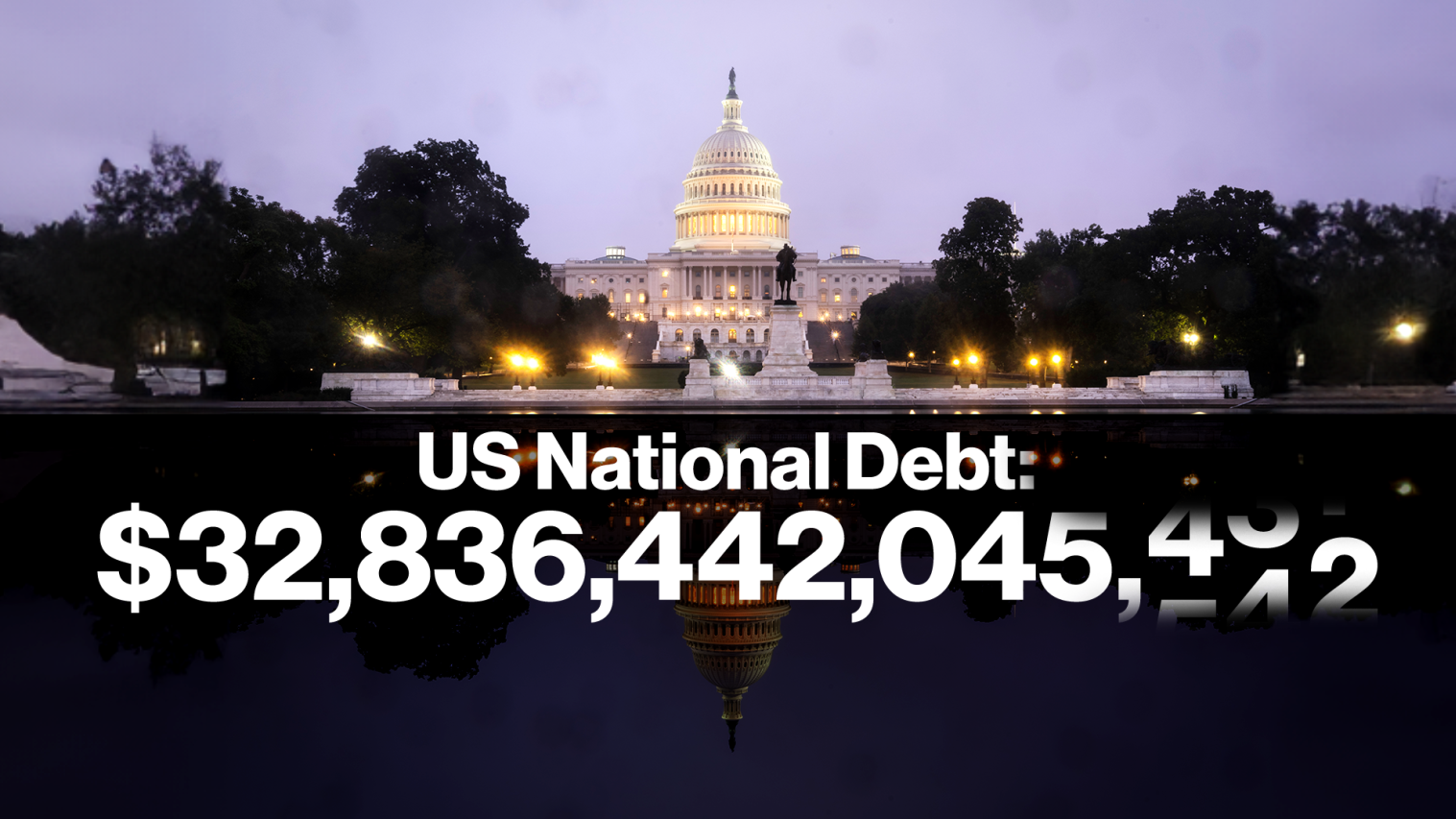Introduction- Trillions on Fire: The Next Global Crisis Starts in Washington

Imagine waking up one morning to headlines screaming that your country’s credit card bill has ballooned to $38 trillion—yes, trillion with a T—and the interest alone is gobbling up more cash than the entire military budget. That’s not some dystopian novel; that’s the reality of the US national debt right now, in November 2025. As I sit here sipping my coffee, scrolling through the latest fiscal reports, I can’t help but wonder: How did we get here? And more importantly, could this America’s debt spiral really set off a chain reaction that drags the whole world down with it?
I’ve been following money stories for years—ever since I covered the 2008 crash as a cub reporter—and this feels different. Back then, it was banks playing with fire. Today, it’s Uncle Sam, and the flames are licking higher. In this post, we’ll unpack the beast that is our debt crisis, from its historical roots to the terrifying “what ifs” of a global meltdown. We’ll poke at the sore spots, share some uncomfortable truths, and even toss around a few wild ideas for escape. Buckle up; this isn’t just numbers on a page—it’s the story of how our choices today could rewrite tomorrow’s economy.
The Anatomy of America’s Debt Spiral: A Quick History Lesson
Let’s start at the beginning, shall we? Because understanding the US national debt isn’t about staring at spreadsheets (though we’ll get to those); it’s about seeing the human drama behind the dollars. Picture this: In 1790, Alexander Hamilton twisted arms to assume state debts and kickstart the young nation’s economy. Fast-forward to World War II, when debt soared to 106% of GDP to fund the fight against tyranny. We won, the economy boomed, and that ratio plummeted to 23% by 1974. It was like a family that maxed out the credit cards for a life-saving surgery, then hustled back to financial health.
But somewhere along the way, the discipline slipped. Tax cuts in the 1980s under Reagan? Bold move, but it kicked off a borrowing binge. The 2001 and 2008 crises? They turned deficits into black holes. And don’t get me started on the pandemic—trillions poured out to keep the lights on, rightfully so, but now we’re left with the tab.
Today, the US national debt clocks in at over $38 trillion, up from $34 trillion just a year ago. That’s not hyperbole; it’s straight from the Treasury’s fiscal data. And as a share of our economy? It’s hovering around 120% of GDP, a level that makes economists twitch. To put it in relatable terms: If your household income was $100,000 a year, you’d be $120,000 in the red. Sustainable? Maybe for a bit. But forever? That’s the debt spiral talking—the vicious cycle where more borrowing funds the interest on old borrowing, leaving less for everything else.
For a clearer snapshot, here’s a simple table comparing key moments in our debt history. I’ve pulled these from reliable economic trackers to show how we’ve danced with danger before—and why this time feels like the music’s about to stop.
| Era | Debt Level (Trillions) | Debt-to-GDP Ratio | Key Trigger | Outcome |
|---|---|---|---|---|
| Post-WWII (1946) | $0.27 | 106% | War spending | Post-war boom reduced ratio |
| Reagan Era (1989) | $2.86 | 53% | Tax cuts & defense buildup | Steady climb begins |
| 2008 Financial Crisis | $10.0 | 68% | Bailouts & stimulus | Ratio doubles in a decade |
| COVID-19 Peak (2020) | $27.7 | 133% | Pandemic relief | Temporary spike, then partial recovery |
| Today (Nov 2025) | $38+ | ~120% | Ongoing deficits & interest | Accelerating spiral |
This table isn’t just data; it’s a timeline of tough choices. Notice how each spike came with a crisis, but recoveries relied on growth outpacing debt. Today? Growth’s chugging along at 2-3%, while debt’s exploding at twice that speed. Provocative question: Are we finally out of second chances?
Why the America’s Debt Is Spiraling Faster Than Ever
Okay, history’s cool, but let’s get real—why is this happening now? It’s like watching a slow-motion car crash: You see the obstacles, but no one’s swerving. At the heart of America’s debt spiral is a simple math problem: We’re spending more than we earn, year after year. The 2025 budget deficit? Projected at $1.9 trillion, or about 6% of GDP. That’s not a blip; it’s a habit.
Blame game time (because who doesn’t love one?). Tax policies that favor the ultra-wealthy have shrunk revenues—corporate rates slashed from 35% to 21% post-2017, and loopholes wider than the Grand Canyon. On the flip side, entitlements like Social Security and Medicare are swelling with an aging population. By 2035, those two alone could eat 12% of GDP, up from 8% today. Add in interest payments—now topping $1.2 trillion annually, more than defense or education—and you’ve got a perfect storm.
But here’s the kicker that’s keeping me up at night: Rising interest rates. The Fed hiked them to tame inflation, but now every basis point jacks up the cost of servicing that $38 trillion pile. J.P. Morgan’s chief strategist recently warned that we’re “going broke slowly,” with debt-to-GDP projected to hit 102% by late 2026 under current trends. It’s not just numbers; it’s a squeeze on everyday life. Fewer funds for infrastructure means pothole-riddled roads. Tight budgets could mean cuts to programs that help families like yours and mine.
– Bullet-point breakdown of the drivers:
– Entitlement explosion: Baby boomers retiring en masse—think 10,000 hitting 65 daily until 2030.
– Revenue shortfalls: Stagnant wages for the middle class mean less tax haul, while billionaires optimize away.
– Geopolitical spending: Wars in Ukraine and the Middle East? They’re adding billions to the tab without corresponding revenue.
– Pandemic hangover: Stimulus was lifesaving, but the debt echo lingers.
Curious yet? What if this isn’t just America’s problem? Spoiler: It’s not. But we’ll circle back to that global meltdown tease.
The Hidden Dangers: America’s Debt Risks You Can’t Ignore
Let’s dial up the provocation: Is the US national debt a ticking time bomb or just a grumpy old uncle we can ignore? Short answer: It’s both, and pretending otherwise is fiscal fantasy. The risks aren’t abstract—they’re the shadows creeping into your retirement account, your kid’s college fund, and that dream vacation you’ll never take because inflation ate it.
First off, the interest burden. At current rates, we’re shelling out $1.2 trillion yearly just to keep the lights on for lenders. That’s cash not going to schools, bridges, or R&D that could spark the next tech boom. Crowding out, economists call it—private investment gets starved because Uncle Sam’s hogging the borrowing pool. Result? Slower growth, which makes the debt-to-GDP ratio even uglier. It’s a doom loop: More debt leads to higher rates, which leads to more debt.
Then there’s inflation’s sneaky role. Print money to pay debts? Hello, 1970s-style stagflation. But ignore it, and bond vigilantes (those Wall Street types who demand higher yields) could force the Fed’s hand, spiking rates economy-wide. Mortgages jump, stocks wobble, and suddenly your 401(k) feels like a piñata at a kid’s party gone wrong.
And don’t forget the political paralysis. Debt ceiling fights? We’ve had 78 since 1960, but the 2023 near-miss shaved 0.2% off GDP growth, per the CBO. Imagine that on steroids—a default, even technical, could tank markets overnight.
To make it scannable, here’s a bulleted list of the top national debt risks, ranked by immediacy:
– Immediate: Interest explosion – Could surpass $2 trillion by 2030, rivaling total discretionary spending.
– Medium-term: Growth killer – Every 10% debt-to-GDP hike shaves 0.2% off annual growth, per IMF studies.
– Long-term: Intergenerational theft – Future taxpayers foot the bill, with millennials and Gen Z staring down 180% ratios by 2050.
– Wild card: Confidence crash – If foreign holders (China, Japan) dump Treasuries, yields soar, dollar weakens.
Relatable? Think of it like your own credit score: Ignore the statements, and one day, the bank’s calling. For America, that call could come from global markets.
How America’s Debt Spiral Could Spark a Global Meltdown
Now, the million-dollar question—or should I say trillion?—that’s got me hooked: How does one country’s overspending light the fuse for worldwide chaos? It’s not hyperbole; it’s interconnected economics 101. The US isn’t just big; it’s the linchpin. Our Treasury bonds are the world’s safe haven, the dollar’s reserve currency for 60% of global trade. Rock that boat, and tsunamis hit everywhere.
Start with the ripple effects. Higher US rates to service debt? They export pain—emerging markets like Brazil or India face capital flight as investors chase safer (but pricier) American yields. Remember 2013’s “taper tantrum”? That was mild; a full debt crisis could trigger a 1997 Asia-style contagion.
Then, the dollar’s throne wobbles. If confidence erodes—say, from endless deficits—foreigners sell off holdings. China, with $800 billion in US debt, might diversify, weakening the buck. Result? Imported inflation worldwide, as oil and commodities (priced in dollars) get pricier. Europe, already limping from energy woes, could tip into recession. Asia’s export machine grinds slower.
Experts are sounding alarms. Ray Dalio of Bridgewater pegs a 50% chance of “debt trauma” in the next three years, citing classic late-cycle signs. And a recent analysis paints a vivid picture: A US default could wipe $10 trillion off global stocks in days, per Moody’s simulations. Provocative, right? We’re not talking isolated sneeze; this is the economic equivalent of a supernova.
For clarity, let’s table out potential global meltdown scenarios—low, medium, high impact—based on how deep the debt crisis bites:
| Scenario | Trigger | Global Impact | Likelihood (2025‑2030) |
|---|---|---|---|
| Mild Ripple | Debt ceiling hike delays | 1–2% global GDP dip; EM currency stress | High (70%) |
| Medium Contagion | Yield spike to 5%+ on Treasuries | Recession in Europe/Asia; stock crash | Medium (40%) |
| Full Meltdown | Technical default or downgrade | 5%+ global contraction; dollar devaluation | Low but Rising (20%) |
This isn’t fearmongering; it’s a wake-up. Your portfolio’s exposed, whether you’re in New York or Nairobi. But hey, curiosity killed the cat—satisfaction brings it back. What if we act?
(Quick aside: For a deeper dive into this looming threat, check out this insightful piece on the [U.S. debt spiral’s global risks](https://www.ie.edu/insights/articles/u-s-debt-spiral-a-looming-threat-to-global-economic-stability/)—it nails the interconnected doom loop better than I ever could.)
Lessons from History: Past Debt Crises That Mirror Ours
History doesn’t repeat, but it rhymes, as Mark Twain (or someone) quipped. So, let’s rummage through the attic of economic mishaps for clues on navigating America’s debt spiral. Take Greece in 2010: Debt-to-GDP hit 148%, austerity slashed growth, and the eurozone teetered. Lesson? Painful cuts without growth are a recipe for populism and stagnation. Or Japan in the ’90s: 250% debt ratio, but low rates and domestic holders kept it zombie-walking. Envy that? Sure, until you realize their “lost decade” became three.
Closer to home, our own 1940s spike worked because post-war exports boomed. Contrast that with today’s multipolar world—China’s rising, supply chains fractured. The common thread? Crises hit when growth stalls and politics polarize. Today, with Congress gridlocked and elections looming, we’re primed.
Bullet-point takeaways from these tales:
– Growth is king: Post-WWII, GDP doubled debt’s pace. Aim for that, not austerity alone.
– Credibility counts: Greece lost it; the US still has the dollar’s privilege—but it’s fraying.
– Timing matters: Delay too long, and markets force your hand, à la UK in 2022’s mini-budget meltdown.
– Innovation edge: Tech booms masked US deficits in the 2010s. What’s our next AI-fueled savior?
These aren’t dusty footnotes; they’re blueprints. Ignore them, and we risk repeating Argentina’s serial defaults—eight since independence. Ouch.
Breaking the Cycle: Bold Paths Out of America’s Debt Crisis
Alright, enough doom-scrolling—let’s flip to solutions. Because here’s the thought-triggering bit: Fixing the US national debt isn’t impossible; it’s just politically radioactive. We could balance the budget tomorrow with a mix of spending trims, tax tweaks, and growth hacks. But will we? That’s the trillion-dollar gamble.
Start with the low-hanging fruit—or at least, the least thorny. Reform entitlements: Means-test Social Security for high earners, negotiate drug prices harder under Medicare. That’s $1-2 trillion saved over a decade, per CBO estimates. Tax side? Close carried interest loopholes, add a 2% wealth tax on billionaires. Progressive? Sure. Effective? Simulations say yes, without killing jobs.
But the real provocateur: A national conversation on priorities. Do we fund endless wars or universal pre-K? Subsidize fossil fuels or green tech? Lists help here—imagine a “Fiscal Freedom Agenda”:
– Cut waste: $500 billion yearly in improper payments and pork—audit everything.
– Invest smart:$1 trillion in infrastructure to juice 1% GDP growth, paying for itself via taxes.
– Reform taxes: Broaden the base, lower rates—think 1986’s bipartisan win.
– Global leverage:Use dollar dominance for trade deals that boost exports.
– Moonshot idea: Carbon dividend—tax emissions, rebate to citizens. Revenue up, planet cooler.
Skeptical? Fair. Politics is the art of kicking cans. But history shows turnarounds happen in crises—FDR’s New Deal, Clinton’s surpluses. This debt crisis could be our catalyst. Or our curse.
(And for a sobering take on how we’re inching toward broke, J.P. Morgan’s latest breakdown is a must-read: [America going broke slowly](https://fortune.com/2025/10/14/america-going-broke-jpmorgan-david-kelly-debt-tariffs/). It cuts through the noise with hard data.)
Wrapping It Up: Igniting Change Before the Fire Spreads
As we close this whirlwind tour of trillions on fire, let’s zoom out. The US national debt isn’t some distant monster; it’s the sum of our choices—wars we waged, safety nets we wove, tax breaks we chased. At $38 trillion and climbing, America’s debt spiral whispers warnings of a global meltdown that could upend jobs, markets, and dreams worldwide. But whispers can roar into action if we listen.
I’m not here to preach doom; I’m here to spark that itch—the one that says, “We can do better.” Talk to your reps, vote your wallet, demand fiscal sanity. Because in the end, this isn’t about balance sheets; it’s about the world we leave behind. Will it be one of opportunity or obligation? The clock’s ticking. What’s your move?
What do you think—time for revolution or reform? Drop a comment below; let’s keep the conversation going. And if this hit home, share it—because awareness is the first spark of change.


